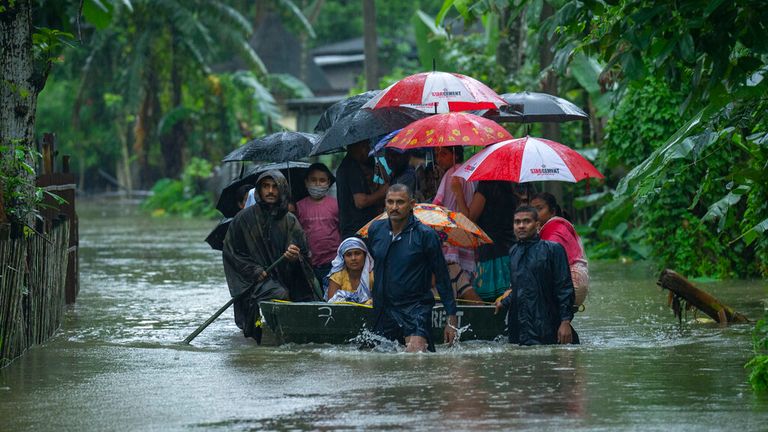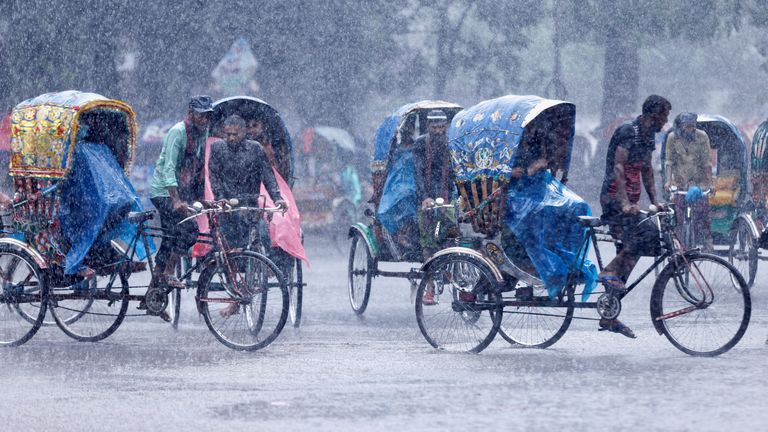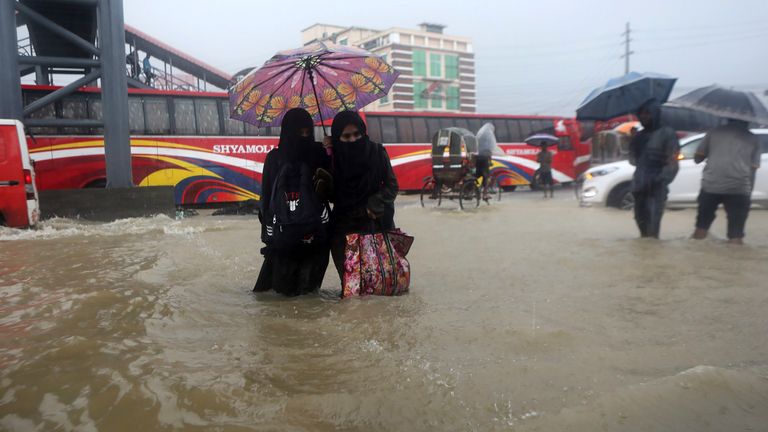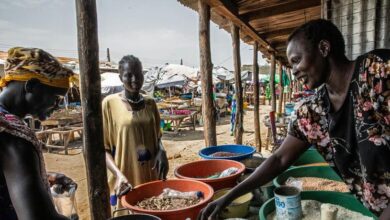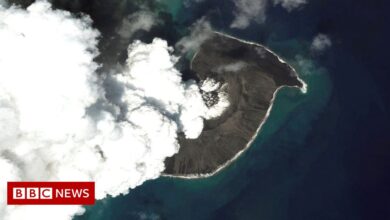At least 18 dead and millions of homes underwater after floods wreak havoc in India and Bangladesh | Climate news
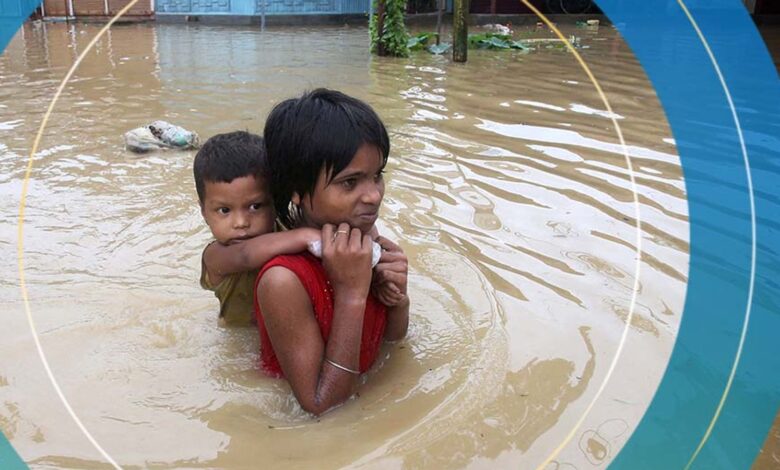
At least 18 people have died and millions of homes have been left underwater after floods hit northeastern India and Bangladesh.
Both countries have asked their militaries to help deal with the extreme flood, which officials fear could intensify with more rain forecast over the weekend.
At least 15 people have been killed by lightning in Bangladesh since Friday, and four were killed in landslides, police officials said.
Flooding in Bangladesh, described by a government expert as potentially the country’s worst since 2004, was exacerbated by runoff from heavy rains through the mountains of India.
In the Indian state of Assam, at least nine people died in floods and another 2 million saw their homes flooded, according to the state’s disaster management agency.
The Brahmaputra River, one of Asia’s largest, broke through its mud embankments, flooding 3,000 villages and farmland in 28 of Assam’s 33 districts.
“The amount of rain is unprecedented,” said Sanjay O’Neil, an official with the meteorological station in Gauhati, the capital of Assam. “We forecast moderate to heavy rain in some parts of Assam through Sunday.”
Incessant rains have pelted India for five consecutive days and caused some train services to be cancelled. Floodwaters have engulfed an entire railway station in Halfong, southern Assam, and dumped mud and silt along the railway tracks.
The Indian Army has been asked to help other disaster response agencies rescue stranded people and provide food and necessities to those with underwater housing.
An army official said: “We are using speedboats and inflatable rafts to rescue people who are flooded.
Massive flooding caused by monsoon rains has trapped nearly 6 million people across the two countries.
In Bangladesh, districts near the Indian border were hardest hit.
According to the flood warning and forecasting center in the capital Dhaka, water levels in all major rivers across the country are rising. The flooded country has about 130 rivers.
The center said flooding is likely to worsen in the hardest-hit Sunamganj and Sylhet districts in the northeast region as well as the Lalmonirhat, Kurigram, Nilphamari and Rangpur districts in northern Bangladesh.
Airport manager Hafiz Ahmed said flights at Osmani International Airport in Sylhet had been suspended for three days due to floodwaters almost reaching the runway.
Bangladesh has a long and wet monsoon season and suffers from tropical cyclones, which are generated in the warm waters of the Bay of Bengal.
But as human activity warms the planet, the South Asian nation is experiencing hotter summers and higher rivers and more flooding during monsoons – which are also less frequent. .
Disrupted weather patterns signal bad news for crop yields and disease outbreaks. The charity WaterAid has warned that contaminated water poses a high risk of disease outbreaks.
“Water and sanitation facilities will be destroyed, swept away,” WaterAid’s country director Hossain I Adib, said of “some of the worst floods in decades”.
Clean water becomes contaminated when toilets and latrines overflow, increasing the risk of disease outbreaks, he said, calling for improved access to clean water.
According to the United Nations climate science group IPCC, around 17% of people in Bangladesh will need to relocate in the next decade or so if global warming continues at its current rate due to sea level rise. high.
